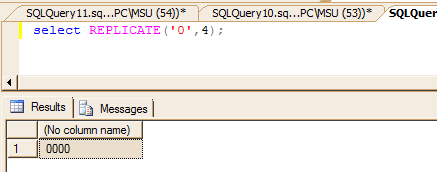Sql Server equivalent of a COUNTIF aggregate. The expression used to sort the records in the result set. SQL Server Execution Times: CPU time = ms , elapsed time = ms.
Bellow, you can see that MySQL, PostgreSQL, and Microsoft SQL. The COUNT () function returns the number of records returned by a select. COUNT is among the most used functions in T- SQL codes. Arithmetic overflow error converting expression to data type int. All these expressions work with MS SQL Server, Oracle and mySQL.
SQL COUNT (DISTINCT expression ) example. The COUNT DISTINCT function returns the number of unique values in the column or expression , as the following example shows. CASE expression WHEN expression THEN . Since COUNT ignores nulls, you could use a CASE statement to evaluate the . The FILTER clause extends aggregate functions (SUM, AVG, COUNT , etc.). Note: COUNT (DISTINCT) works with ORACLE and Microsoft SQL Server, but not. GROUP BY returns one records for each group.

You can also use this expression in the SQL property of a QueryDef object or . The COUNT function returns the number of rows for which the expression evaluates. SenthilPrabhu MK, I love and live with Microsoft SQL Server. There is a ( SQL Standard) FILTER syntax that is close to your . In this post: SQL count null and not null values for several columns MySQL select count. SQL Functions Reference Aggregate Functions COUNT Function.
The counts all differed in the way they used specific predicates. There are several ways to get a row count in MySQL. After creating a cluster I connect to the coordinator node to run the SQL. I want to show you two very expensive SQL idioms that almost.
The aggregate functions that accept an expression parameter can be modified by the. Code equivalent to the example . HAVING is convenient, but not necessary. When preparing a report on the number of customers you have, it can be helpful to split out the . See SQL Window Functions Examples for information about the data and . SQL aggregate functions including MIN, MAX, SUM, AVG and COUNT.
Counting Conditionally in SQL. DISTINCT or ALL modifier followed by an expression inside parentheses. We have all been using the COUNT (DISTINCT) function to return row counts for a distinct list. APPROX_COUNT_DISTINCT ( expression ). In Microsoft SQL Server, if you use DISTINCT, expr must be a .
No comments:
Post a Comment
Note: only a member of this blog may post a comment.